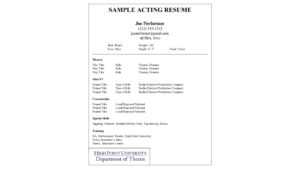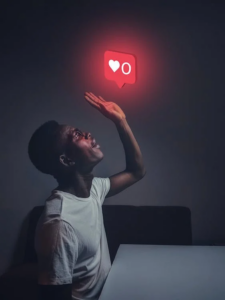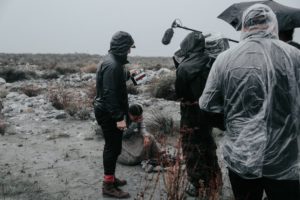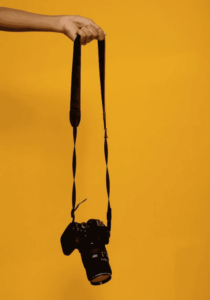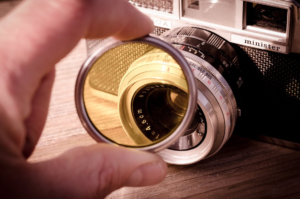Juxtaposition is a literary device used to place two or more things side by side, often to compare or contrast them or produce an interesting effect. A rare color combination. Also, the state of being placed in a way that contrasts shapes next to each other. Writers use it for rhetorical purposes. When the author juxtaposes the elements in the text, the reader enjoys the suspense and explores the meaning of their differences. Cinderella is a fine example here. Her goodness and moral virtues become even more apparent to the reader when her evil stepsister serves as a contrast. The term “Juxtaposition” is a combination of the Latin “Juxta,” meaning “closest,” and the French “position”. Explore the power of juxtaposition in storytelling and art.

Why is Juxtaposition Used?
When a writer uses juxtaposition for two elements, they invite the reader or the audience to compare, contrast, and consider their relationship more closely. Usually, they do so with one of these aims in mind:
- To flesh out a character by contrasting their traits against another character or a foil
- To explore the nuances of a trait or idea that a reader or listener might otherwise miss
- To draw a link between seemingly unrelated ideas or images
- To create absurdity or humor
- To argue that one idea or element is better than another

What Are Types Of Juxtaposition?
Juxtaposition refers to any contrast created between different things when placed side by side. Because this is such a broad concept, many other literary terms refer to specific types of Juxtaposition.
- Oxymoron
- Character foils
- Antithesis
Oxymorons
Oxymoron is a type of Juxtaposition when two contradictory words are used side by side. Juliet’s dialogue, “Parting is such sweet sorrow,” for instance, the words “sweet” and “sorrow” are used side by side to demonstrate the complexity of her love, which causes her to feel both glad and sad at the same moment.
Character foils
Character foils compare two characters with different backgrounds or characteristics. This method helps bring each character to life for the reader or the viewer. For example, Cinderella’s goodness stands out because of her cruel and self-centered stepsisters.
Antithesis
The juxtaposition of two absolute opposites is called an antithesis. This type of juxtaposition is the most obvious because it uses combinations we are all familiar with.
Here are some common examples of antithetical pairings that creators often use:
- Good and evil
- Light and darkness
- Beauty and ugliness
- The old and the new
- Civilization and nature
When can Juxtaposition be used?
- To display the contrast between the characters in a story – the use of a protagonist and an antagonist.
- To demonstrate two sides of an argument – especially like the one in a debate.
- To indicate the link between contrasting ideas.
- To exhibit similarities between people, places, animals, things, or ideas.
How can Juxtaposition be used?
- Consider the main ideas or points you want to compare and contrast.
- Jot down the similarities or differences between them.
- Analyze how they can be linked based on their similarities or differences.
- Present them in a way that best supports your writing or speech.
Juxtaposition and Movies
Juxtaposition is crucial in films as a storytelling device and a cinematic technique. Its primary functions include:
Highlighting Contrasts
Juxtaposition is used to highlight differences, whether they are between characters, themes, settings, or visual elements. By placing contrasting elements side by side, filmmakers draw attention to these disparities, allowing viewers to see and feel the differences more vividly.
Character Development
Juxtaposing characters with opposing traits, values, or motivations can lead to character development and dynamic interactions. This often serves as a source of conflict and drama in films, driving the plot forward.
Emphasizing Themes
Filmmakers use juxtaposition to reinforce and underscore the film’s themes or messages. Contrasting scenes or elements can provide different perspectives on a central theme, making it more resonant with the audience.
Creating Tension and Suspense
Juxtaposition can build tension and suspense by placing contrasting elements nearby. For example, a tranquil scene followed by a sudden and intense action can heighten the suspense.
Aesthetic Impact
Visual Juxtaposition can be used for its aesthetic impact, creating striking and memorable imagery. Contrasts in color, composition, and visual motifs can enhance the visual appeal of a film.
Mood and Tone
Juxtaposing different tones or moods in a film can evoke complex emotional responses from the audience. For example, a lighthearted moment followed by a dark and sad one can create emotional depth.
Narrative Structure
Non-linear storytelling often relies on Juxtaposition by presenting events out of chronological order. This technique engages viewers by challenging them to piece together the narrative puzzle.
Irony and Satire
Juxtaposition is frequently used for comedic or satirical effect. Placing incongruous elements together can create irony and humor, making the audience reflect on the situation’s absurdity.
Symbolism
Juxtaposing symbols or motifs with contrasting meanings can enrich the film’s symbolism and add layers of interpretation. Symbolic Juxtaposition invites viewers to delve deeper into the film’s subtext.
Cultural and Social Commentary
Juxtaposing different cultural or social contexts within a film can serve as commentary on issues such as class, race, or societal norms. This can encourage viewers to reflect on real-world disparities and inequalities.
Overall, Juxtaposition in films is a versatile and powerful tool that allows filmmakers to convey meaning, emotion, and subtext through the artful placement of contrasting elements. It engages the audience’s intellect and emotions, making films more compelling and thought-provoking.
Smallville: Juxtaposition and Character (Video Essay)
Film Technique – Juxtaposition
Juxtaposition and Film Editing
In film editing, juxtaposition is a powerful technique to create meaning, emotion, and impact by contrasting two or more shots or scenes. This technique sequentially arranges images, highlighting differences, similarities, or thematic connections. Here are some ways Juxtaposition is used in film editing:
Emotional Juxtaposition
Contrasting scenes with different emotional tones can evoke powerful responses from the audience. For example, Juxtaposing a joyful wedding scene with a sad funeral can intensify the emotional impact.
Temporal Juxtaposition
Editing sequences out of chronological order can create suspense and intrigue. Flashbacks and non-linear storytelling often use temporal Juxtaposition to reveal information or add complexity to the narrative.
Visual Juxtaposition
Contrasting visual elements or compositions can convey thematic ideas or highlight character development. For instance, placing a character in a wide, open space followed by confinement in a tight, dark room can signify a shift in their circumstances.
Symbolic Juxtaposition
Editing can place symbols or motifs in contrast to each other to add depth to the story. For example, a recurring visual motif, like a clock, can be juxtaposed with scenes of characters racing against time.
Rhythmic Juxtaposition
The editing rhythm can Juxtapose fast-paced action sequences with slow, reflective moments. This variation in tempo keeps the audience engaged and emphasizes specific scenes.
Parallel Editing
Juxtaposition is frequently used in parallel editing, where two or more separate actions or storylines are intercut to create tension and build connections between them. Classic examples include cross-cutting in chase scenes or suspenseful phone conversations.
Conceptual Juxtaposition
Editing can Juxtapose abstract concepts, such as life and death, love and hate, or good and evil, by showing contrasting images or scenes representing these ideas.
Character Contrasts
Juxtaposing different characters’ actions, environments, or emotions in a sequence can reveal their differences and conflicts. This is a key tool for character development and conflict-building.
Atmospheric Juxtaposition
Contrasting scenes’ atmosphere can help establish mood and tone. For example, juxtaposing a sunny day with a dark, stormy night can accentuate a change in a character’s emotional state.
Juxtaposition Editing Assignment
Juxtaposition in film editing is a versatile tool for filmmakers to convey meaning and emotion. It enables them to engage the audience’s intellect and emotions by creating contrasts, revealing connections, and enhancing the narrative’s depth and complexity.
How Juxtaposition and the Kuleshov Effect are Connected?
The Kuleshov Effect and Juxtaposition in film editing are closely related concepts that both emphasize the power of editing to shape the viewer’s perception and interpretation of a film’s narrative. Here’s how they are connected:
Juxtaposition in Film Editing
Juxtaposition refers to the technique of placing two or more shots or scenes in contrast with each other. This contrast can be achieved through various means, such as visual, emotional, or thematic differences between the shots. Juxtaposition is a fundamental tool in film editing, allowing filmmakers to create meaning and emotional impact by arranging shots.
Kuleshov Effect and Juxtaposition
The Kuleshov Effect is a specific example of the power of Juxtaposition in film editing. In the Kuleshov Effect experiment, a neutral shot of an actor’s face was juxtaposed with different shots, and viewers’ interpretations of the actor’s expression changed based on the context created by the surrounding shots. This experiment demonstrated how the meaning and emotional impact of the actor’s expression were derived from the juxtaposition of shots rather than the individual shot of the actor’s face.
Contextual Meaning
The Kuleshov Effect illustrates that the relationships between shots and sequences often create meaning and emotion in a film. It shows how Juxtaposition influences the viewer’s understanding and emotional response to a film. Filmmakers use juxtaposition to manipulate context and create subtext, making it a central element of cinematic storytelling.
Film Editing and Narrative
Both the Kuleshov Effect and Juxtaposition play a crucial role in film editing’s ability to shape narrative and convey deeper layers of meaning. Editors strategically place shots concerning one another to create narrative connections, build character development, establish themes, and evoke emotional responses.
In summary, the Kuleshov Effect serves as a specific demonstration of the broader principle of Juxtaposition in film editing. Juxtaposition is the fundamental technique through which filmmakers manipulate the film’s context, meaning, and emotions, and the Kuleshov Effect experiment defines its impact on viewer interpretation.
Juxtaposition In Film | Kuleshov Effect | Juxtaposition in Film Editing | Learn Film Online | LFO
Few Movie Examples in Juxtaposition
Juxtaposition is a common and effective storytelling technique used in many movies. Here are some movie examples where juxtaposition plays a significant role:
The Godfather (1972)

The film Juxtaposes scenes of violence with family gatherings, highlighting the duality of the character’s lives and their involvement in organized crime.
THE GODFATHER | 50th Anniversary Trailer | Paramount Pictures
[Jwatchnow link=”https://www.netflix.com/in/title/60011152″ watchon=”Netflix”]
Pulp Fiction (1994)

Director Quentin Tarantino is known for his non-linear storytelling and the use of Juxtaposition to create suspense. This film intercuts various storylines, often revealing information out of chronological order.
Pulp Fiction | Official Trailer (HD) – John Travolta, Uma Thurman, Samuel L. Jackson | MIRAMAX
[Jwatchnow link=”https://www.amazon.com/Pulp-Fiction-John-Travolta/dp/B008Y6W4I8/ref=sr_1_1?crid=3UUC94I7CYJAC&keywords=pulp+fiction+movie&qid=1697004728&sprefix=pulp+fiction+movie%2Caps%2C388&sr=8-1″ watchon=”Prime Video”]
Requiem for a Dream (2000)

This film uses Juxtaposition to highlight the stark contrast between the dreams and aspirations of its characters and the harsh realities they face due to addiction.
Requiem for a Dream (2000) Trailer #1 | Movieclips Classic Trailers
[Jwatchnow link=”https://www.amazon.com/Requiem-Dream-Ellen-Burstyn/dp/B000JCQCW4/ref=sr_1_2?crid=3GQZQE1K9CVVX&keywords=Requiem+for+a+Dream%22+%282000%29&qid=1697005189&sprefix=requiem+for+a+dream+2000+%2Caps%2C743&sr=8-2″ watchon=”Prime Video”]
Forrest Gump (1994)
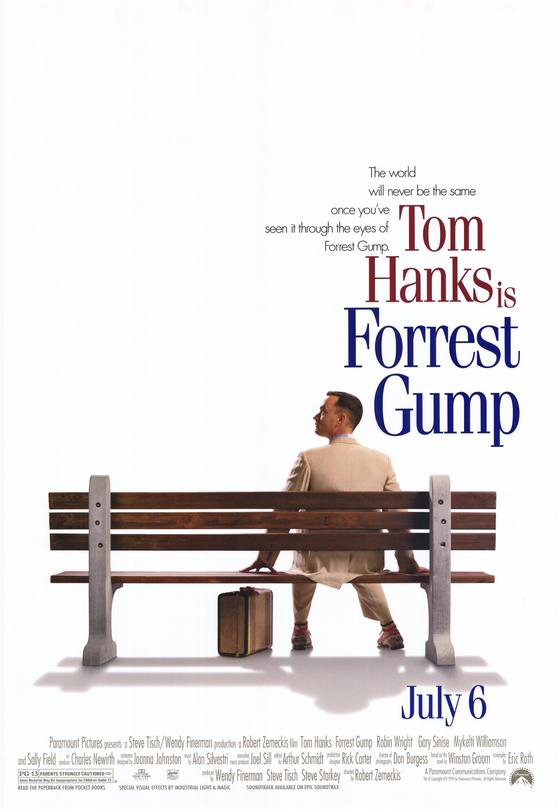
The film frequently uses Juxtaposition by placing the character Forrest Gump in various historical contexts, contrasting his innocence and the complex events of his time.
[Jwatchnow link=”https://www.amazon.com/Forrest-Gump-Tom-Hanks/dp/B002QVZ71I/ref=sr_1_2?crid=2P8F124C5BTVV&keywords=forrest+gump&qid=1697005444&sprefix=forrest+gump%2Caps%2C536&sr=8-2″ watchon=”Prime Video”]
American Psycho (2000)

The film uses Juxtaposition to highlight the protagonist’s dual life as a wealthy investment banker and a psychopathic serial killer. The contrast between these two worlds adds to the film’s dark humor.
[Jwatchnow link=”https://www.amazon.com/American-Psycho-Christian-Bale/dp/B002PA1HHI/ref=sr_1_3?crid=13OR93DQ75V9T&keywords=American+Psycho%22+%282000%29&qid=1697005508&sprefix=american+psycho+2000+%2Caps%2C620&sr=8-3″ watchon=”Prime Video”]
Amélie (2001)

The Juxtaposition creates whimsy and humor in this film. For example, the contrast between Amélie’s quirky fantasies and the mundane world around her adds to the film’s charm.
DIE FABELHAFTE WELT DER AMÉLIE | Offizieller HQ Trailer | Deutsch German | Jetzt auf BD, DVD & VoD
[Jwatchnow link=”https://www.amazon.com/Amelie-Audrey-Tautou/dp/B08YJMHFG4/ref=sr_1_1?crid=1LWMPKCP8UCQU&keywords=Am%C3%A9lie%22&qid=1697005851&sprefix=am%C3%A9lie+%2Caps%2C875&sr=8-1″ watchon=”Prime Video”]
Black Swan (2010)

The film Juxtaposes the beauty and elegance of ballet with the psychological horror and paranoia experienced by the main character, creating a sense of duality and tension.
BLACK SWAN | Official Trailer | FOX Searchlight
[Jwatchnow link=”https://www.youtube.com/watch?v=I3q_W1ErH5A” watchon=”YouTube Movies”]
Crash (2004)

The film interweaves multiple storylines, juxtaposing racial tensions and prejudices in Los Angeles and emphasizing the connections between seemingly unrelated characters.
Crash (2005) Official Trailer – Sandra Bullock, Don Cheadle, Brendan Fraser
[Jwatchnow link=”https://www.amazon.com/Crash-Sandra-Bullock/dp/B000XSAKP4/ref=sr_1_2?crid=3AN9BBSRRK1EZ&keywords=Crash%22+%282004%29&qid=1697006529&sprefix=crash+2004+%2Caps%2C723&sr=8-2″ watchon=”Prime Video”]
Fight Club (1999)

Juxtaposition is used to emphasize the contrast between the mundane life of the protagonist and the chaotic and violent world of the underground fight club.
Fight Club | #TBT Trailer | 20th Century FOX
[Jwatchnow link=”https://www.amazon.com/Fight-Club-Brad-Pitt/dp/B003MAQM6Q/ref=sr_1_1?crid=3EBZHMFE47DW6&keywords=fight+club&qid=1697006915&sprefix=fight+club%2Caps%2C495&sr=8-1″ watchon=”Prime Video”]
Eternal Sunshine of the Spotless Mind (2004)
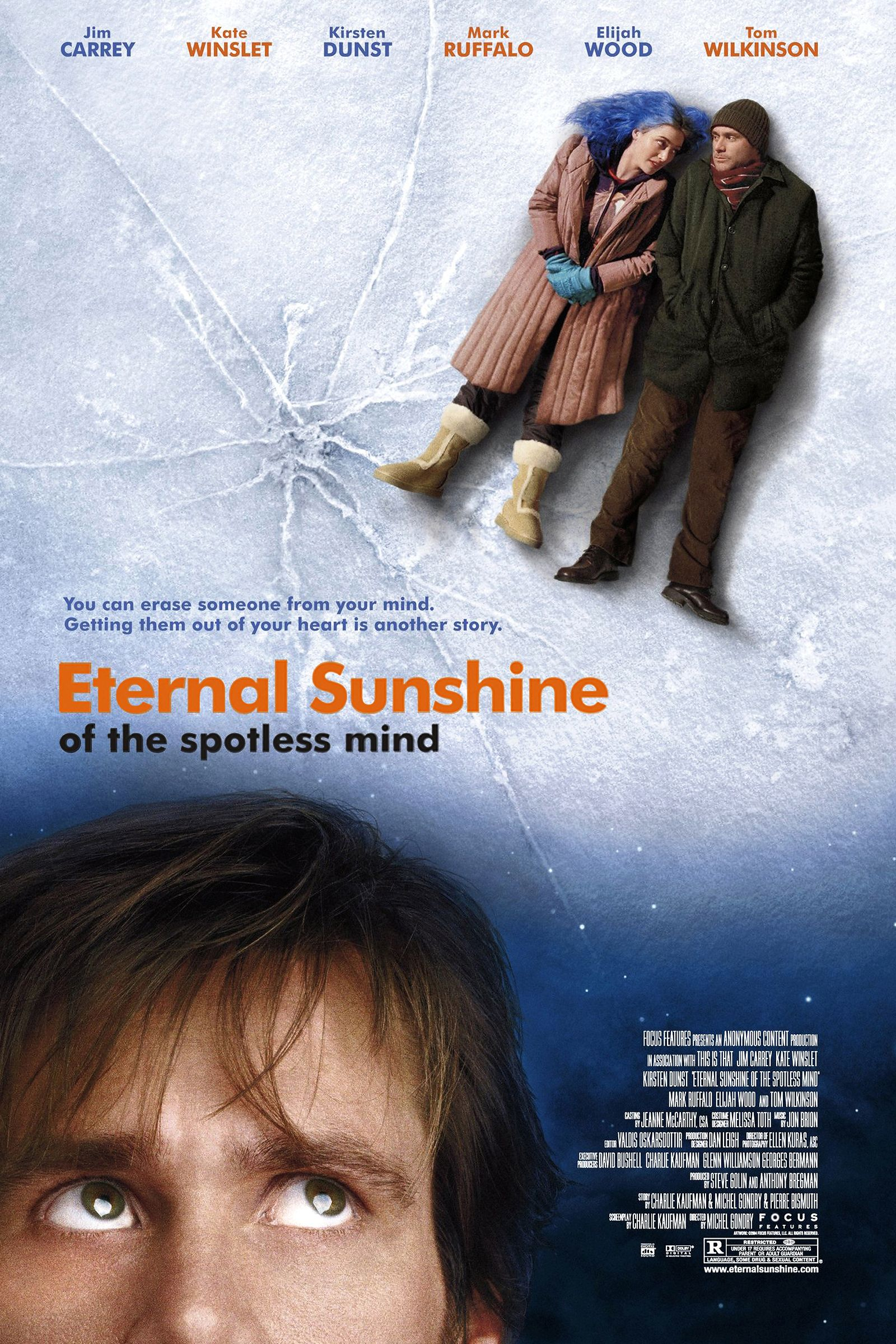
The film employs juxtaposition to contrast the beauty of memory, the pain of loss, and the complexities of romantic relationships.
Eternal Sunshine of the Spotless Mind Official Trailer #1 – Jim Carrey, Kate Winslet Movie (2004) HD
[Jwatchnow link=”https://www.amazon.com/Eternal-Sunshine-Spotless-Mind-Carrey/dp/B001TAFCBC/ref=sr_1_1?crid=A77PG87C34L3&keywords=%22Eternal+Sunshine+of+the+Spotless+Mind%22+%282004%29&qid=1697006964&sprefix=eternal+sunshine+of+the+spotless+mind+2004+%2Caps%2C799&sr=8-1″ watchon=”Prime Video”]
These examples demonstrate the versatility of Juxtaposition in filmmaking, where it can create suspense, emphasize themes, reveal character development, and engage the audience on both intellectual and emotional levels.
Videos
What is Juxtaposition in Film — How to Take Visual Storytelling to the Next Level
What is JUXTAPOSITION? | Easy Explanation with Examples
“What is Juxtaposition?”: A Literary Guide for English Students and Teachers
Juxtaposition: Explanation and Rhetorical Analysis Activity
Juxtaposition examples from Movies and TV
Film Essay – Suspense through Juxtaposition – Robin

